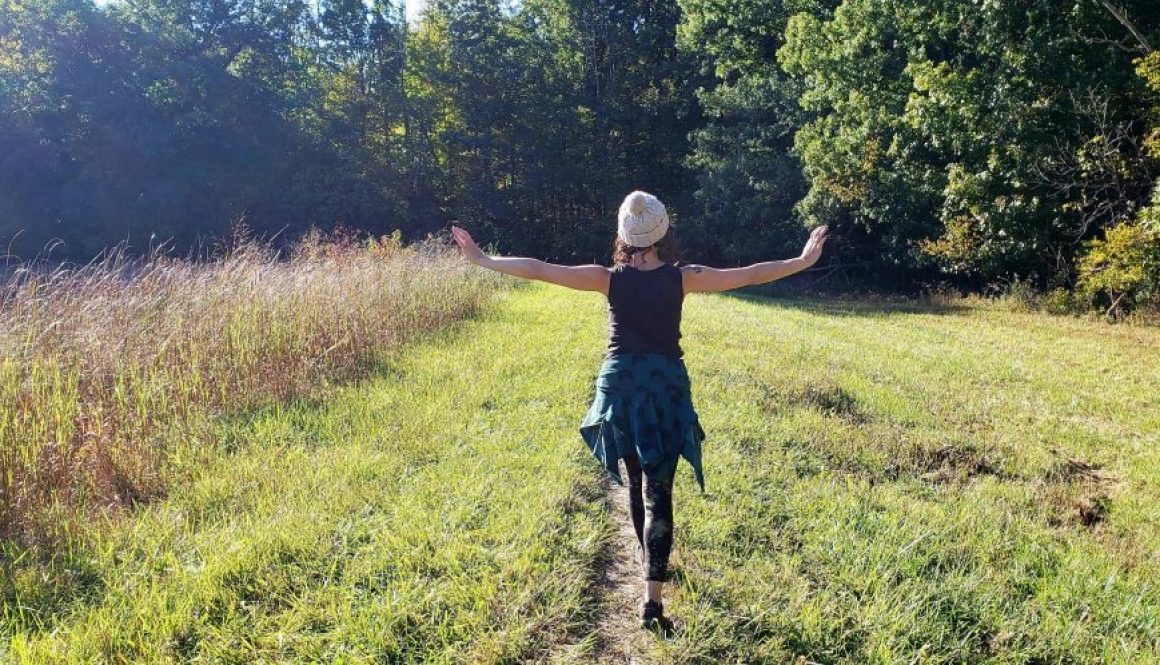My Quarantine Practice: An Essay
Shelter-in-Place at Featherwood
An Essay on What I’ve been Practicing during Quarantine.
I’m starting with the teaching (from The Pocket Pema Chodron) I’ve used most since the Shelter-in-Place began. I can honestly say that asking myself, “What would Pema do?” allows me to be present for my life in ways I didn’t even know I was missing out on. The lesson below has 1000% been a lifeline for me.
Keep Standing Up
From The Pocket Pema Chodron
I remember my first interview with my teacher very well because I was hesitant to talk to him about what was really the problem in my life. Instead, I wasted the whole interview chattering. Every once in a while he said, “How’s your meditation?” and I said, “Oh, fine,” and then just chattered on. When it was almost over I blurted out, in the last half-second, “I’m having this terrible time and I’m full of anger.”
My teacher walked me toward the door and said, “Well, what that feels like is a big wave that comes along and knocks you down. You find yourself lying on the bottom of the ocean with your face in the sand, and even though all the sand is going up your nose and into your mouth and your eyes and ears, you stand up and you begin walking again. Then the next waves just keep coming, but each time you get knocked down, you stand up and keep walking. After a while, you’ll find that the waves appear to be getting smaller.
That’s how it works. If you keep lying down there, you’ll drown, but you don’t even have the privilege of dying. You just live with the sense of drowning all the time. So don’t get discouraged and think, “Well, I was feeling depressed and I was hiding under the covers, but then I got out of bed, I took a shower. How come I’m not living in a Walt Disney movie now? I thought I was going to turn into Snow White. How come I’m not living happily ever after? The waves just keep coming and knocking you down, but you stand up again and with some sense of rousing yourself. He continued to say, ”After a while, you find that the waves seem to be getting smaller.” That’s really what happens.
Within the first week of SIP (Shelter-in-Place) I opened my book to this teaching, but anger isn’t my thing. I put myself in Pema’s place and instead of saying, “I’m having this terrible time and I’m full of anger” I would have said, “I’m having this terrible time and I’m full of fear.”
In some areas of my life, I have confidence to share, like The Hive. The Hive is exactly the kind of work I want to be doing in the world. This suredness makes everything else easy. When things get challenging, instead of thinking, “I wonder if we’ll make it?”, I’ve already decided that there isn’t anything else I want to do or be willing to do. Immediately my wondering becomes focused on how to adapt. I allow myself to trust that we’ll make it and this trust allows me to remain open to possibilities I might have overlooked because of fear. It’s not that there’s no room for doubt. I literally don’t have any doubts about the sustainability and purpose of The Hive Community.
When it comes to the rest of my life, it’s been challenging for me to experience the same level of confidence and suredness. For whatever reasons (‘cuz I honestly am coming to believe , in the long rung, the reasons really don’t matter) I’ve been projecting my fears of rejection/betrayal/abandonment on parts of my non-Hive life experience. During SIP, it’s become extremely obvious just how much of my suffering/confusing/challenge is created by my own mind.
I can be stubborn. The longer I refuse to accept responsibility for my confusion, the more intense my experience of the fear, making it even harder to accept responsibility because, geesh, this is definitely someone else’s fault. I couldn’t knowingly cause myself so much grief, right?
Over the last 14 months (I’m a Scorpio and keeping track of time dates = details I love) I’ve been exploring the idea that no, it’s not out there. It’s in here. It’s me. Not that there’s anything wrong with me, but I’m the common denominator. After a couple SIP weeks passed, I noticed I was starting to experience the same habits of thinking-feeling, but none of the usual triggers were present. In fact, when I caught on to this fact, I was able to slow time and watch how I’d think myself into experiencing typical feelings of fear and anxiety. Let me repeat, I caught myself creating my own fear and anxiety. While maddening, simultaneously I felt giddy—happy, frustrated, like-Duuuuh.
One of the ways I’ve been applying KPU (Keep-Standing-Up, Pema’s teaching I introduced at the start of this essay) in my daily life is to think about my habits as grooves in my mind (this isn’t my original idea, but I’m not sure who I heard talking about it). My default habits have deep grooves. It’s easy for the wheels of my thinking to slip into those well-worn pathways. My new habits of thinking-feeling may not even have established a groove yet, or maybe it’s so shallow, the wheels of my thinking have trouble following those newly created pathways.
It’s uncharted territory, carving out new grooves, new habits of thought. Uncharted territory, the unknown, justifiably invokes a little fear, trepidation. Except, the fear I experience when I encounter this open way feels life threatening, rather than anticipatory and inspirational. Thinking about getting knocked down by a wave, feeling the sand in my nose, the weight of water on my chest, unable to hold my breath any longer, I can relate to that.
I can relate to getting up the first time and expecting everything to be different and then getting hit by the second wave and immediately doubting the process (in reality, doubting myself) because the second wave almost felt worse than the first wave. But, Pema said it gets easier and I’ve learned to trust Pema’s teaching. Her way isn’t necessarily easy, but it’s definitely simple. I can do simple.
Pushing my way through all this uncharted territory brings me to the same fork in the road, over and over and over again. It’s almost like I’ve found myself in a temporal anomaly (this is a Star Trek reference, another example is the movie Groundhog Day) and I’m stuck replaying the same day on repeat. One side of the fork follows the well-worn path of my default thinking-feeling. The other side, barely discernible, the new trail I’m carving out. Each time I’m hit with a wave of old thinking-feeling, I’m brought back to the same fork and must choose which way to go. Continue to deepen the old groove or mark out the new. What’s it going to be, MelissaP.?
I’m eleven weeks into this SIP experiment and the waves are definitely smaller. However, when I think about reintegration, about finding myself in familiar places and situations, my thinking-feeling gets pulled toward the deepest grooves. Then I remember the first lesson that brought me to the place where any of this thinking is possible anyway. The, “Melissa, you’re the common denominator” lesson. I’m the one creating my experience of the world around me. It’s my obsessive focus on carving out the new path that manifests the new normal. It’s my dogged determination to feel the way I want to feel that creates the world I want to live in. I’ve proven to myself that I know how to get up. I’ve proven to myself that the waves do get smaller and the new way becomes clearer and clearer. Now I just have to trust. Which is exactly what I’ve been trying to avoid having to do.
If I don’t turn around now, I just might get where I’m going. (This is a quote on the board next to my desk. I’m not sure who said it, but I’m the Queen of turning around and starting again. AKA the Queen of Burning Bridges AKA ScorpioWoman. Thankfully, I’ve been working on that.)
This month our Hive Homework includes noticing the stories we’re telling ourselves. (If you’d like to experience a guided meditation and intention setting practice I recorded on this focus, check it out here.)
Most of us are pros at noticing the difficult stories we tell ourselves, but don’t pay attention to the stories about our strengths and joys also rumbling about in our minds. Your mission is to notice ALL of them without bias. Be the Neutral Observer and view this next month as a science experiment. Throw out your expectations of what you might find. You don’t have to change anything about who you are or your behavior. Just. Notice.
Hive Home Homework: May 22-June 20, 2020
1. Neutrally observe your stories.
2. Ask yourself: What feelings do they elicit? What triggers them? Which ones are you familiar with? Which ones surprise you?
I’m excited about the potential of this space on our website and new ways of sharing my personal and teaching practices with you. It’s all mixed up together anyway and having a spot that’s totally in my control (ok, it’s the web, and what is really in 100% in our control, but anyway) vs. posting on a social media site, well it feels different for me.
Please come back and visit often. Thanks for sharing your time and attention with me.
Melissa P.

